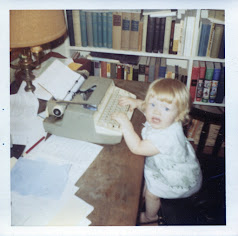 |
| Click To Enlarge |
A couple of weeks ago, after I published my post about my great-grandmother, Eva Maud Bean, I was looking at some of her parents' records while trying to decide what exactly to do next and I realized that I had made a classic genealogy mistake - I had assumed!
I had looked at the 1881 census in which everyone in the Bean family was listed as a Free Will Christian Baptist, then considered the fact that I had been unable to find a baptismal record for Eva and assumed it was because the family was Free Will Christian Baptist when she was born in approximately 1874. Once I started looking at her parent's records again, I realized that they had not been baptized in that church until June of 1881, so while it is still possible that the family attended a Baptist church when Eva was born, it certainly isn't a sure thing.
This isn't a mistake I want to make again, so I knew I needed a new approach and later that day while I was looking at some relevant background material I realized that what I need is a timeline.
I probably haven't used timelines enough in my research, and when I have it has been something sketched quickly on a sheet of paper. I know there are better ways and especially because I want to do something very visual, I decided to do some searching and see what other genealogists are doing with timelines.
I remembered that DearMYRTLE had a Wacky Wednesday not long ago with Dr. Shelley Murphy talking about timelines, so I put that on my list along with searches of Cyndi's List, the Family Search Wiki and the blogs on Geneabloggers Tribe.
Coincidentally, while I was beginning my search I saw a tweet in my timeline from the same Dr. Shelley. She was promoting her upcoming talk at RootsTech and she asked, "Thinking about timelines?". Uuuuummm, yes I am actually, how did you know??
So, I started with that Wacky Wednesday episode which is available on YouTube. It was helpful and had some great pointers, but the timeline discussed in this presentation was more of a list and I was looking for something visual.
Next, I moved on to Cyndi's List. As of today, Cyndi Ingle has compiled a list of 82 links under various subheadings in her Timelines category.
While not every link was helpful for my current project, they were all interesting, like The Food Timeline found in the General Resources category. In the end, two resources helped me the most; the Family Search video, "Using Excel to Create Timelines" under the General Resources category and a series of blog posts by The Shy Genealogist under the Templates and Forms category. The timeline I am creating now (top of this post) is a variation on the one she creates, step-by-step, in three posts. I loved how she organized certain data on the top and other events on the bottom. I'm trying this approach by putting most events on the bottom and religious information on the top.
Also intriguing were a software option and a template that I will definitely look at again after I buy a new computer. The software is Genelines Timeline Software, which can use a GEDCOM file if you wish and the template can be found here.
I have to say I never even made it to the Family Search wiki, although Cindy had included some things she found there, or to a search of the blogs on Geneabloggers Tribe but I will use them in the future if I need more ideas.
Although my timeline is obviously not finished, it has already helped me to see some things I hadn't given much thought before, like the ten year gap between the births of Eva's youngest known siblings and the fact that her brother was buried in an Anglican cemetery when he died at the age of four even though their parents were now baptized in the Free Will Baptist church. So my new analysis of events is already raising new questions, and that is a good thing, especially if they lead me to new uderstandings.





Anna, this is a really thought-provoking post. I haven't used timelines but after seeing the visual timeline at top, I now know I have to dive into this tool. Thanks!
ReplyDelete